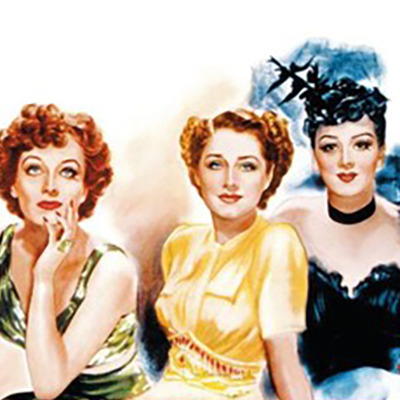On the night of the 1936 Broadway opening of The Women, its author Clare Boothe Luce – her new surname courtesy of her recent, second, marriage to TIME magazine publisher Henry Luce – escaped to the 102nd floor of the Empire State Building. Her first play, Abide With Me, had been a flop, closing after 36 performances the previous year. She had no intention of being in the audience if it happened again.
The Women, like Abide With Me, was inspired by her disastrous first marriage to menswear heir and Olympic skater George Tuttle Brokaw. This time around she found the right approach to the subject – scabrous comedy instead of grisly drama – and The Women ran for over 650 performances despite competing on Broadway with John Gielgud's Hamlet, Margaret Sullivan in Stage Door, Kaufman and Hart's You Can't Take It With You and Noel Coward and Gertrude Lawrence appearing in a rotating series of Coward's short plays, among others.
The reviews didn't shower the new play with praise; The New York Sun's critic wrote that the author knew "too many sabre-toothed tigresses" and the Evening Journal called it "glittering, smart, hard, laughable, fascinating, heartless, and repulsive" but audiences responded and it was playing to full houses by the end of its first month. And buzz about The Women had spread during out-of-town tryouts to an MGM script scout who predicted "a mad scramble" for the movie rights. He wrote in a memo that it was "flashy, hokey material and not that expertly written, but it is an unusually good set-up for the screen."
MGM ended up making the movie, with producers Harry Goetz and Max Gordon buying the rights from the writer for just $125,000 (Boothe Luce would regret this for the rest of her life). It was originally supposed to star Claudette Colbert as Mary Haines, the heroine, with Gregory La Cava directing. It was made with Norma Shearer as Mary and George Cukor as director; I can't help but speculate just what that alternate universe version of the picture would have been like.
The movie takes the play out of its set of stage bound interiors by opening outside a luxury women's salon – today we'd call it a spa – on what we can only presume is Fifth Avenue or the Upper East Side in Manhattan. Two lapdogs on leashes snarl and lunge at each other as their owners try to enter, and the camera follows patrons from room to room as they have manicures, permanents and mud baths, or exercise in austere little rooms where exasperated instructors crack wise at their wealthy, spoiled and – it's not just implied but underlined – birdbrained clients.
Sylvia Fowler (Rosalind Russell) is getting a manicure from Olga (Dennie Moore) and focuses just long enough on her logorrheic gossiping to hear that the husband of her cousin Mary (Shearer) is having an affair with Olga's roommate Crystal (Joan Crawford), a perfume counter salesgirl at Black's Fifth Avenue. Sylvia isn't shocked as much as thrilled by this tidbit and immediately runs off to share the news with Edith (Phyllis Povah), the brood mare of their social circle, constantly pregnant, with a vast but cacophonous apartment full of daughters.
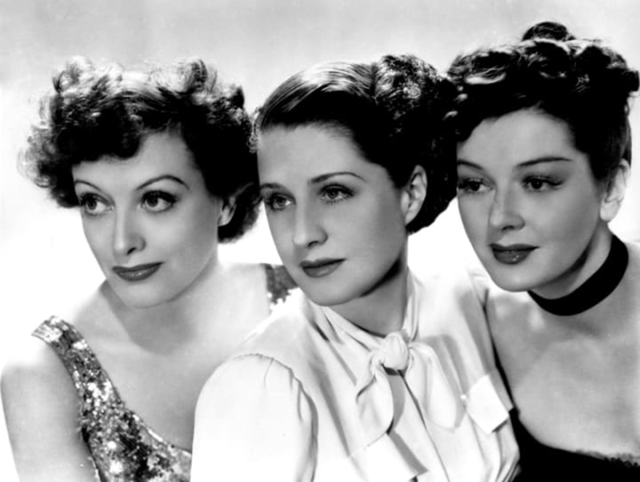
When we meet Mary in her suburban idyll, Boothe Luce paints her as blissfully deluded, utterly unprepared for what's about to hit her; the term "fool's paradise" is used conspicuously. She's packing for a vacation in Canada with her husband – it was where they went for their honeymoon and it's become an ideal and a refuge in their marriage; a place where they can refresh the relationship.
She hosts her friends for a luncheon – Sylvia and Edith, sweet, innocent Peggy (Joan Fontaine) and the acerbic spinster Nancy (Florence Nash), a writer who peppers the group with sarcastic asides. There has been speculation that Booth Luce intended Nancy to be her proxy; if that's at all true it would have been wishful thinking since a glance at her biography up till this point makes it plain that Mary and Mary alone embodied the writer's experience of marriage up until she met Henry Luce.
Sylvia can't stop herself from dropping broad hints about Stephen's infidelity; she even goes so far as to show off her manicure, nails painted Jungle Red, and suggest Mary make an appointment with Olga. Like a lamb being led to the slaughter Mary dutifully falls into the trap. Olga, like any good plot device, drops the inevitable bomb on Mary's fool's paradise, in spite of the warning she'd had the day before when her husband called off the trip to Canada at the last minute.
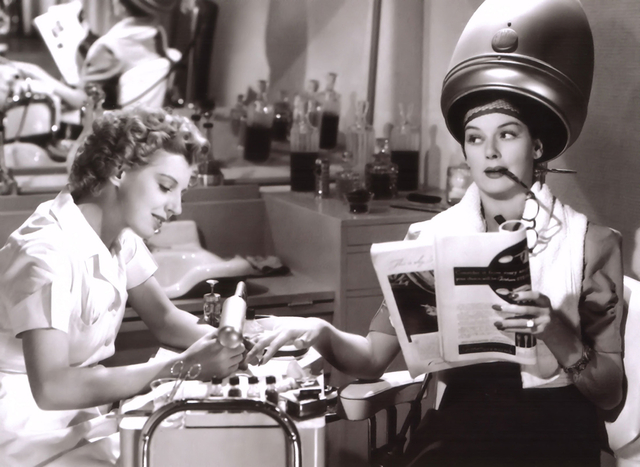
Cukor – renowned as the greatest director of women in Hollywood – not only retains Boothe Luce's strategy of keeping men entirely outside the frame of the story, he expands the forty or so speaking parts for women in the play to over 130 in the movie, a gynocracy rife with casual cruelty. When one woman submits her face to a magnifying contraption at the salon, her friend pushes her way in for a look and exclaims "I hate to tell you dear but your skin makes the Rocky Mountains look like chiffon velvet."
In Rage for Fame: The Ascent of Clare Boothe Luce, a fascinating biography of the writer, Sylvia Jukes Morris writes that Cukor "loved working with women to such an extent that he had been removed from Gone With the Wind for favoring Vivien Leigh over Clark Gable." (Which is one way of looking at it.) She notes that Cukor "fanatically adhered to Clare's conceit that all the sets – designed with exceptional flamboyance by Cedric Gibbons – were to be feminine domain: ladies' rooms, couture departments, boudoirs, mud and bubble baths, cosmetics counters, and kitchens."
"Grips built a vast, circular, twenty-four-unit beauty and exercise salon sporting the most up-to-date equipment... All the prop paintings, photographs, and figurines were female. Every book captured by the lens was by an 'authoress', and not one had a male name in the title. Yet nine tenths of the dialogue was about men, leading one reviewer to call them 'the absent presence."
Or as the tag line on The Women's promotional poster read: "It's All About Men."
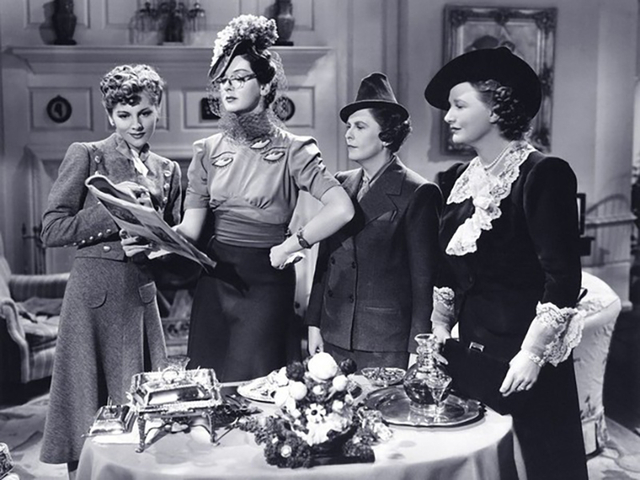
Mary is left reeling by the news of her husband's affair and struggles to respond in a way that will let her retain her pride – to the dismay of her mother (Lucile Watson), who counsels that her husband will tire of Crystal, that she's a symptom of his insecurity and fear of aging, and that the person she needs to worry about most is their daughter Little Mary (Virginia Weidler). She also tells Mary not to listen to her girlfriends, who do not have her well-being at heart.
"I'm an old woman," she tells her. "I know my sex."
Mary rejects her advice, claiming that while suffering silently might have suited her mother's generation, it simply won't do for hers. "This is today," she says. "Men and women are equal."
She extracts a promise from her husband to give up Crystal but discovers that he's done no such thing when Crystal – now living in a hotel at his expense – arrives at an exclusive fashion show spending far more than a shopgirl's wages on a new wardrobe. The two women end up in adjoining changing rooms so Mary decides to confront her rival and Sylvia leaks a wildly exaggerated account to the gossip columns, pushing Mary and her marriage past the breaking point.
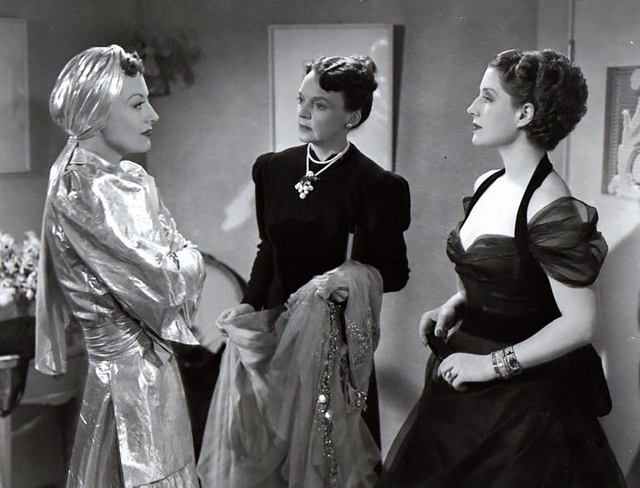
It was no secret that there was no love lost between Shearer and Crawford so casting them as rivals was an obvious but brilliant move. Their enmity is crucial to the story since Mary has so many enemies among her friends that it's necessary to focus all that conflict on one person in this crowd of adversaries.
For her part, Crystal is happy to maintain the status quo as Mary gets the better part of the deal – the name, the standing in society, the leverage of keeping the family together at least for appearances – but Mary can't tolerate his betrayal or Crystal's cynicism. Her unwillingness to play what the former shopgirl regards as a game provokes Crystal to consider playing for bigger stakes. In the play she tells Mary that "the longer you stay in here the more confident I get... Mrs. Haines, you are a hell of a dull woman!"
In the movie Crawford's Crystal proclaims that "You noble wives and mothers bore the brains out of me!"
The most harrowing aspect of The Women is how its author lets Mary twist in the wind for much of the story, humiliated by her husband, betrayed by her friends and fighting a losing battle with the mercenary Crystal despite her own better instincts and the advice of her mother. It's hard to read Morris' biography and not see Boothe Luce's regret over her first marriage, her willingness to deny her ambition and her talent by playing society wife, and her abject emotional state when it was over, which saw her briefly fall into the clutches of an apparently reputable psychiatrist who prescribed an affair with him as part of the cure for her "repressed childhood conflicts."
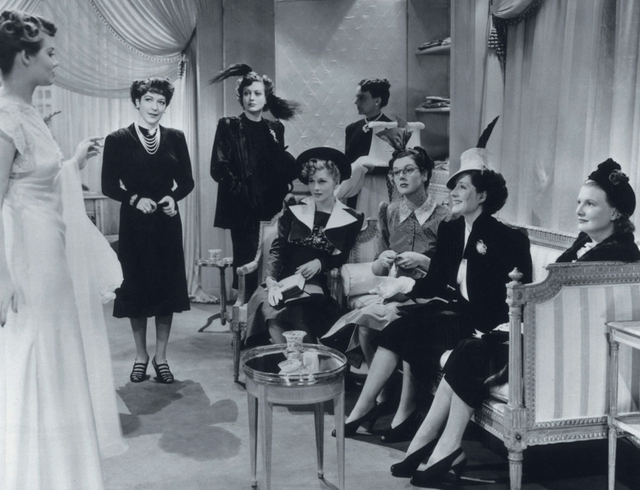
Boothe Luce wrote The Women in anger, after she discovered that after helping substantially with the conception of her new husband's latest project – the photo magazine LIFE, a keystone of Time, Inc. for decades afterward – he had no intention of giving her an editorial role at the magazine, despite her success as managing editor at Vanity Fair. Luce's male editors, particularly Ralph Ingersoll and Daniel Longwell, were adamantly opposed to the idea, and her husband was unwilling to go against them. She swallowed her disappointment and headed to The Greenbrier, a luxury resort in West Virginia, where she hammered out a first draft of The Women in three weeks.
Her marriage in tatters, Mary takes the train west for a Reno divorce in the company of Peggy, whose own marriage has crumbled thanks to her emotionally immature husband. Boothe Luce arrived in Reno on an early February morning in 1929, just before sunrise, to discover that the apartment she'd reserved in a hotel there was still occupied, and facing the prospect of living on $30,000 a year – a far cry from the $400,000 she'd had available while a married woman.
It was, in Morris' description, "a typical western town with one stop-go traffic light, a five-and-ten, and several gas stations, movie houses, and speakeasies. Its Chinese and Italian restaurants did a lively take-out business, thanks to the approximately two thousand transients who annually swelled the indigenous population." While some were wealthy, others paid for their passage through the Reno divorce mill working as "cooks, waitresses, chambermaids and croupiers." Boothe Luce was somewhere in between, doing her own laundry and making breakfast and lunch in the tiny kitchen of her hotel apartment.
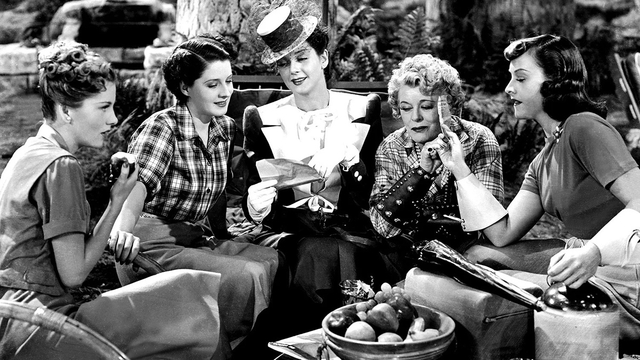
The "City of Broken Vows", also known as "Cupid's Graveyard", is far less austere for Mary, whose last official act before leaving her Manhattan apartment is to sign copious paperwork prepared by an officious woman from her husband's office – dissolving an upper-middle class marriage is an imposing legal affair. He's provided for her well, so she ends up boarding at a ladies-only dude ranch run by the coarse but plain-speaking Lucy (Marjorie Main).
Fellow inmates in this post-matrimonial purgatory include Flora, the florid Countess De Lave (Mary Boland), middle-aged, much-married and given to cooing "L'amour! L'amour!" when recounting her hapless romantic history. She's stark contrast with the brassy Miriam (Paulette Goddard), a former chorus girl who scored big with the husband she's now divorcing.
Just before Mary's divorce decree comes through they're joined by Sylvia, who has no idea that Miriam is the co-respondent in her divorce from Mr. Fowler. She gets wise when Edith sends her a letter with a clipping from a gossip column, which launches the two women into a hair-pulling cat fight.
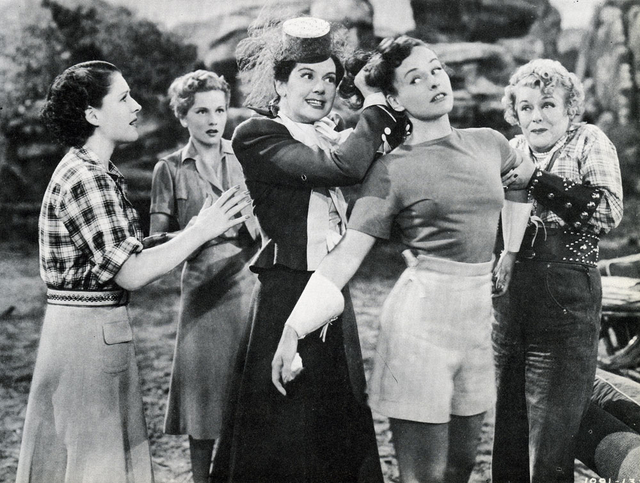
When the dust settles Miriam and Mary have a heart-to-heart conversation where the chorus girl – a social but not an emotional doppelganger for the mercenary Crystal – tries to convince Mary that divorcing her husband is a mistake she's intent on making out of pride. I found it fascinating as a demonstration of what I've always found wrong with Shearer as a leading lady.
The long dialogue between the two actresses is a showcase for their very different personas and acting styles. Shearer's career and her stardom went back to the last decade of the silent era and her marriage with MGM production chief Irving Thalberg, while Goddard's was more recent and commenced with her relationship with Charlie Chaplin.
Shearer onscreen is very much the grand dame, and she never overcame the arch emoting of the late silent and early sound eras. She doubles down on noble suffering, playing for the camera like she's the only person in the shot. Goddard is far more natural and, ultimately, sympathetic; putting aside the alternate universe version of the picture with Colbert as Mary, I found myself imagining one where Goddard got the part.
It's almost impossible to imagine MGM casting Goddard as Mary, especially in the wake of Thalberg's sudden death just three year earlier, which conferred on Shearer the unofficial title of First Lady of the MGM lot. (Goddard in 1939 was still seen as too young, too fun, too sexy.) Still, Goddard's Mary would have been emotionally warmer, her harrowing more affecting and her ultimate revenge more satisfying. It's hard not to be grateful that Shearer turned down the lead roles in Now, Voyager and Mrs. Miniver before she unofficially retired from acting in 1942.
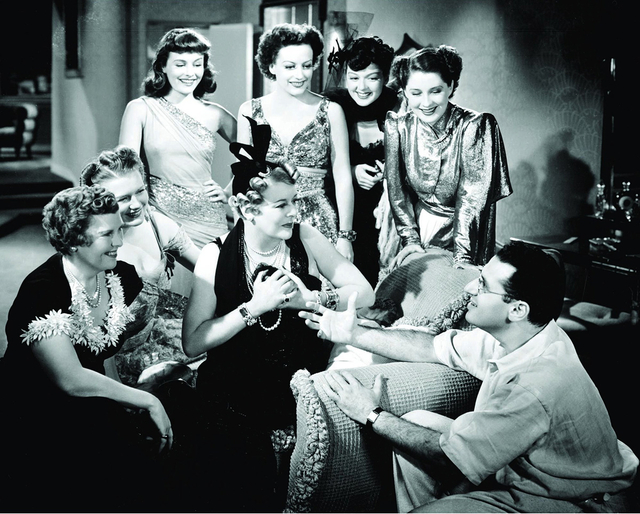
George Cukor was probably the perfect director for The Women, and he can thank getting kicked off Gone with the Wind for making him available for the job. In his biography George Cukor: A Double Life, Patrick McGilligan writes how in the aftermath of his dismissal from Gone with the Wind "Cukor was more eager to please. The director was of particular value to MGM, at this point in time, for purposes of handling actresses with studio sinecures, especially a trio of them who were approaching middle age and mid-career crises – Norma Shearer (adrift without Thalberg to guide her career), Joan Crawford (considered past her prime), and Greta Garbo (increasingly picky about projects)".
McGilligan doesn't consider The Women as Cukor at the top of his game: "Because the director found it difficult to shed tears for the sanctity of a marriage under stress, the central story has little emotional pull, while all of the comedy – and entertainment – is on the periphery. The banter is caustic, the lines oozing with double entendre."
Many people have tried to discern just who was responsible for that dialogue. F. Scott Fitzgerald worked on early drafts of the script and Jane Murfin (Alice Adams, Roberta, Little Women) took over when his work was judged insufficient. Anita Loos was given the job of "putting the laughs in where the censors had taken them out" and Cukor associate Donald Ogden Stewart (Holiday, The Philadelphia Story) was also rumoured to have lent a hand.
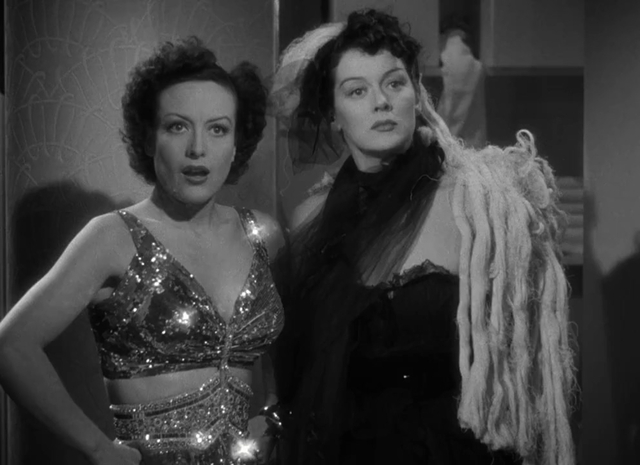
The Women, McGilligan says, "bears evidence of the director's haste, his eleventh-hour arrival, and his general disinterest. Scenes are unusually choppy, elaborate tracking shots serve no purpose; backgrounds and décor are unimaginative. A superfluous fashion-show interlude – in color, easy to snip out – was filmed by someone else. At 132 minutes, the picture is, to put it mildly, overlong."
The film did well when it was released but didn't really earn back its high budget until after it was re-released in 1947. It didn't get any Oscar nominations but that might have to do with being released in 1939, the "miracle year" of the studio system, where it shared screen time in theatres with Gone with the Wind, The Wizard of Oz, Stagecoach, Mr. Smith Goes to Washington, Ninotchka, Dark Victory, Of Mice and Men, Love Affair and Goodbye Mr. Chips.
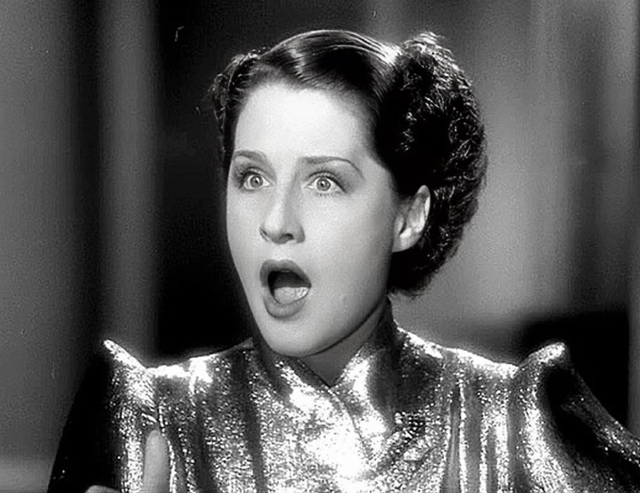
Clare Boothe Luce's theatrical version of The Women became wildly popular with amateur and repertory theatre groups and was revived on Broadway in 1973 – with Kim Hunter as Mary and Myrna Loy as her mother – and again in 2001 with Cynthia Nixon as Mary, Kristen Johnson as Sylvia and Jennifer Tilly as Crystal. MGM remade it as a musical, The Opposite Sex, in 1956 with June Allyson and Joan Collins, and made the unfortunate mistake of letting men into the story. (The less said about the 2008 remake with Annette Bening and Meg Ryan the better.)
As for the author, her life became even more interesting after her first Broadway success, as Booth Luce went on to work as a war correspondent, a member of the House of Representatives, and the U.S. ambassador to Italy. She remained with Henry Luce until his death in 1967.
While I can appreciate McGilligan's criticisms of The Women, I have never been able to deny its relentless, brutal pacing – especially in scenes where women fill the screen – and excoriating tone. For years I've considered it a perfect film for the run-up to Halloween since it's ultimately a horror film as terrifying as anything made by Tobe Hooper or George Romero.
Club members can let Rick know what they think by logging in and sharing in the comments below, as access to the comments section is one of many benefits that comes along with membership in the Mark Steyn Club.

